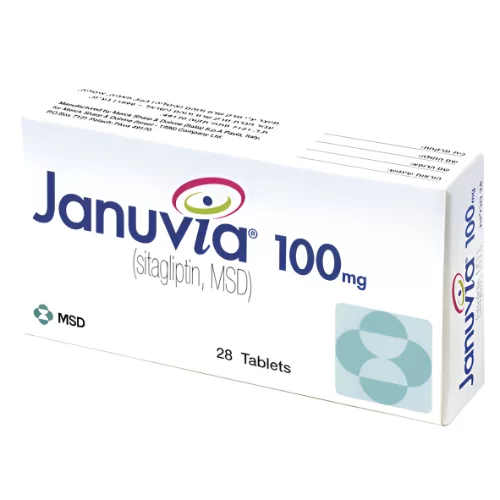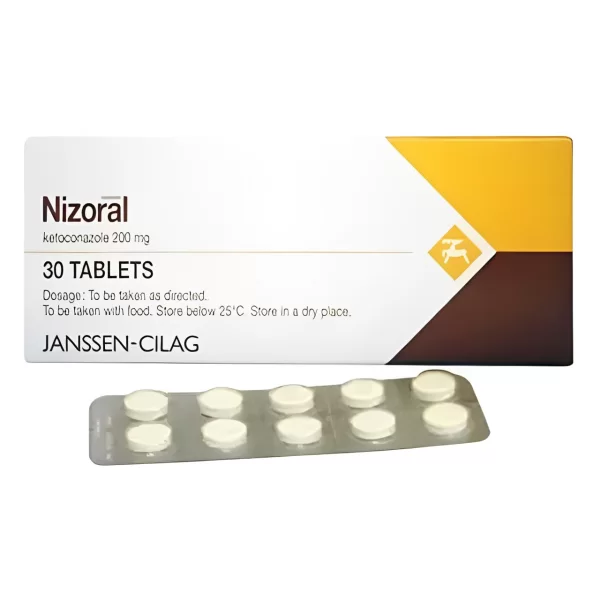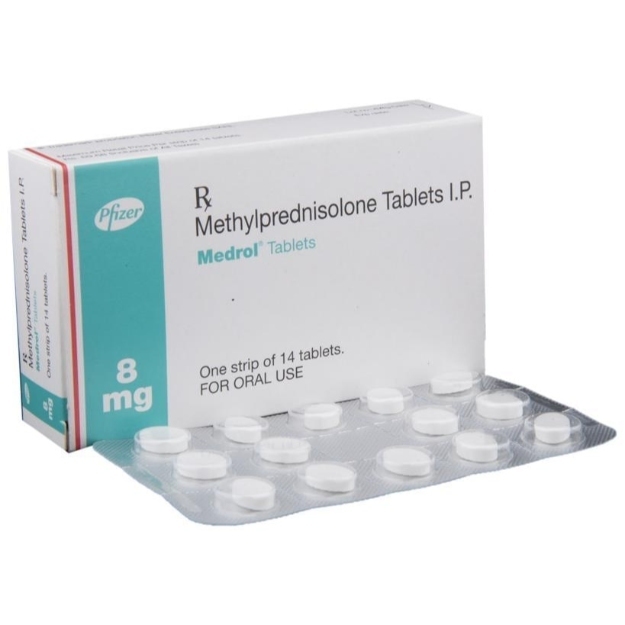
Buspar
Buspar - 10mg
| Product | Per Pill | Savings | Per Pack | Order |
|---|---|---|---|---|
| 90 pills | $0.44 | $39.23 | Buy Now | |
| 120 pills | $0.40 | $4.18 | $52.30 $48.12 | Buy Now |
| 180 pills | $0.37 | $12.55 | $78.45 $65.90 | Buy Now |
| 270 pills | $0.34 | $25.10 | $117.68 $92.58 | Buy Now |
| 360 pills | $0.33 | $37.66 | $156.91 $119.25 | Buy Now |
Buspar - 5mg
Overview of Buspar
General Introduction to Buspar Buspar, known generically as buspirone, is a medication primarily used to treat anxiety disorders. Unlike benzodiazepines, Buspar does not cause significant sedation or dependency, making it a preferred choice for long-term management of anxiety. It works by influencing neurotransmitters in the brain, particularly serotonin and dopamine. Buspar is available in tablet form and is typically taken two to three times daily.
Key Benefits and Unique Properties of Buspar
- Non-Sedating: Unlike other anti-anxiety medications, Buspar does not cause significant sedation or drowsiness.
- Low Risk of Dependency: Buspar is not associated with dependency or withdrawal symptoms, making it suitable for long-term use.
- Effective Anxiety Relief: Provides effective relief from symptoms of generalized anxiety disorder (GAD) without the risk of addiction.
- Minimal Cognitive Impairment: Does not impair cognitive or psychomotor functions, allowing patients to maintain their daily activities.
- Well-Tolerated: Generally well-tolerated with a favorable side effect profile compared to benzodiazepines.
Effectiveness of Buspar Clinical studies have shown that Buspar effectively reduces symptoms of anxiety, including nervousness, tension, and irritability. Patients often experience improvement within a few weeks of starting treatment. Buspar is particularly effective for generalized anxiety disorder (GAD) and provides a safer alternative to benzodiazepines.
Safety and Tolerability of Buspar Buspar is generally well-tolerated when used as directed. Common side effects include dizziness, headache, nausea, and restlessness. Serious side effects, such as allergic reactions and serotonin syndrome, are rare but can occur. Regular monitoring and patient education can help manage these risks and ensure safe use.
Indications for Use of Buspar
Diseases and Conditions Treated by Buspar Buspar is indicated for the treatment of generalized anxiety disorder (GAD) and short-term relief of symptoms of anxiety. It is particularly useful for patients who require long-term anxiety management without the risk of dependency.
Primary Symptoms and Indications for Buspar
- Generalized Anxiety Disorder (GAD): Reduces symptoms such as excessive worry, nervousness, and tension.
- Short-Term Anxiety Relief: Provides temporary relief from symptoms of anxiety, including restlessness and irritability.
Dosage and Administration of Buspar
Recommended Dosage of Buspar The typical starting dose of Buspar for adults is 5 mg to 10 mg taken two to three times daily. The dose may be gradually increased by 5 mg increments every 2 to 3 days until the desired therapeutic effect is achieved, up to a maximum dose of 60 mg per day. Buspar should be taken consistently, either always with or always without food, to maintain stable blood levels.
Timing and Frequency of Buspar Administration
- Generalized Anxiety Disorder: Taken two to three times daily to manage symptoms of anxiety.
- Short-Term Anxiety Relief: Dosing frequency and timing depend on individual patient needs and response to treatment.
Additional Recommendations for Buspar Use
- Consistency: Take Buspar at the same times each day to maintain consistent blood levels.
- Missed Dose: If a dose is missed, take it as soon as remembered unless it is almost time for the next dose. Do not double the dose to make up for the missed one. Continue with the regular dosing schedule.
Mechanism of Action of Buspar
Description of Buspar Mechanism Buspar works by modulating the activity of neurotransmitters in the brain, particularly serotonin and dopamine. It acts as a partial agonist at serotonin (5-HT1A) receptors and has a moderate affinity for dopamine (D2) receptors, which helps alleviate symptoms of anxiety.
Biochemical Processes Involving Buspar The primary action of Buspar involves enhancing serotonergic activity while modulating dopaminergic pathways. This dual mechanism helps reduce anxiety symptoms without causing sedation or significant cognitive impairment.
Physiological Effects of Buspar
- Organ and System Functions: Reduces anxiety by modulating neurotransmitter activity in the brain, improving mood and emotional stability.
- Therapeutic Effects: Provides effective management of generalized anxiety disorder, improving patients' quality of life by reducing excessive worry and tension.
Composition of Buspar
Active Ingredients in Buspar The active ingredient in Buspar is buspirone hydrochloride, an anxiolytic agent that effectively reduces anxiety symptoms.
Inactive Ingredients in Buspar Inactive ingredients may include lactose, microcrystalline cellulose, magnesium stearate, and other excipients that stabilize the formulation and ensure proper absorption and efficacy of the medication.
Side Effects of Buspar
General Introduction Understanding potential side effects is crucial for the safe use of Buspar. Patients should be aware of both common and serious side effects to monitor their health effectively while on the medication.
Possible Side Effects of Buspar
- Common Side Effects: Dizziness, headache, nausea, restlessness, and lightheadedness. These side effects are usually mild and transient.
- Less Common Side Effects: Some patients may experience blurred vision, fatigue, and trouble sleeping.
- Serious Side Effects: Rare but serious side effects include allergic reactions (rash, itching, swelling), serotonin syndrome, and chest pain. Immediate medical attention is required if any serious side effects occur.
Frequency and Severity of Buspar Side Effects Common side effects are generally mild and do not significantly interfere with daily activities. Severe side effects are rare but can be serious, necessitating immediate medical intervention. Regular follow-ups and patient education on correct usage can minimize risks.
Prevention of Side Effects of Buspar
General Introduction Preventing side effects is key to maximizing the therapeutic benefits of Buspar. By following preventive measures, patients can reduce the likelihood of experiencing adverse reactions.
Tips for Preventing Buspar Side Effects
- Follow Dosage Instructions: Use Buspar as directed to avoid excessive use, which can lead to adverse effects.
- Regular Monitoring: Regular check-ups with healthcare providers can help detect and manage potential side effects early.
- Consult Healthcare Providers: Inform your healthcare provider about any other medications or supplements to avoid potential interactions.
Contraindications for Buspar
General Introduction Understanding contraindications ensures the safe use of Buspar. Certain conditions and diseases may preclude the use of this medication.
Conditions and Diseases Contraindicating Buspar
- Hypersensitivity: Patients with a known hypersensitivity to buspirone or any of its components should not use this medication. Allergic reactions can include symptoms such as rash, itching, swelling, and difficulty breathing.
- Severe Liver or Kidney Impairment: Buspar is contraindicated in patients with severe liver or kidney impairment due to the risk of further organ damage.
Warnings/Precautions for Buspar
General Introduction Following precautions is essential to ensure the safe and effective use of Buspar. Patients should be informed about potential risks and how to mitigate them.
Important Warnings for Buspar
- Serotonin Syndrome: Buspar can increase the risk of serotonin syndrome, especially when taken with other serotonergic drugs. Patients should be monitored for signs of serotonin syndrome, such as agitation, hallucinations, and rapid heart rate.
- Withdrawal Symptoms: Although rare, discontinuing Buspar abruptly can cause withdrawal symptoms. It is advisable to taper the dose gradually under medical supervision.
Precautions for Buspar Use
- Regular Monitoring: Regular check-ups with healthcare providers are essential to monitor overall response to treatment.
- Patient Education: Patients should be educated on the proper use of Buspar, recognizing signs of serious side effects, and when to seek medical help.
Missed Dose of Buspar
General Introduction Proper management of missed doses helps maintain effective symptom control. Patients should be aware of how to handle missed doses to avoid disruptions in their treatment regimen.
What to Do If a Dose of Buspar is Missed If a dose is missed, it should be taken as soon as remembered unless it is almost time for the next dose. In such cases, the missed dose should be skipped, and the patient should continue with the regular dosing schedule. It is important not to double the dose to make up for the missed one, as this can increase the risk of side effects.
Tips for Adherence to Buspar
- Reminders: Use alarms or medication organizers to help remember to take Buspar as prescribed.
- Routine: Take the medication at the same times each day, either always with or always without food, to develop a routine and reduce the chances of missing a dose.
Drug Interaction with Buspar
General Introduction Understanding potential drug interactions helps in avoiding adverse effects and ensuring the effectiveness of Buspar. Patients should be aware of common interactions and how to manage them.
Examples of Interactions with Buspar
- Monoamine Oxidase Inhibitors (MAOIs): Concurrent use can increase the risk of serotonin syndrome. Buspar should not be used with MAOIs or within 14 days of discontinuing an MAOI.
- Serotonergic Drugs: Medications such as SSRIs, SNRIs, and triptans can increase the risk of serotonin syndrome when taken with Buspar.
- CYP3A4 Inhibitors: Drugs like ketoconazole and erythromycin can increase Buspar levels, leading to increased side effects.
- CYP3A4 Inducers: Medications such as rifampin can decrease Buspar levels, reducing its effectiveness.
How to Avoid Negative Interactions with Buspar
- Medication Review: Regularly review all medications with healthcare providers to identify and manage potential interactions before they cause adverse effects.
- Inform Healthcare Providers: Always inform healthcare providers of all medications being taken, including over-the-counter drugs and supplements, to ensure safe and effective use of Buspar.
Overdose of Buspar
Symptoms of Buspar Overdose Overdosing on Buspar can lead to symptoms such as dizziness, nausea, vomiting, drowsiness, and confusion. In severe cases, it can cause significant central nervous system depression. Immediate medical attention is necessary if an overdose is suspected to prevent serious complications and ensure prompt treatment.
Actions to Take in Case of Buspar Overdose
- Immediate Measures: Seek emergency medical attention or call a poison control center immediately if an overdose is suspected. It is important to provide healthcare professionals with information about the amount of medication taken and the time of ingestion.
- First Aid: While waiting for medical help, provide supportive care to the affected individual. This includes maintaining an open airway, monitoring vital signs, and keeping the person comfortable. Do not induce vomiting unless instructed by a healthcare professional. In a medical setting, treatments may include gastric lavage, activated charcoal administration, and symptomatic management to address specific overdose symptoms.
Pharmacokinetics of Buspar
Absorption of Buspar Buspar is rapidly absorbed following oral administration, with peak plasma concentrations occurring within 1 to 1.5 hours. The bioavailability is approximately 5%, and food can increase the extent of absorption.
Distribution of Buspar Once absorbed, Buspar is widely distributed throughout the body, with a volume of distribution of approximately 5.3 L/kg. It is highly bound to plasma proteins (approximately 95%), which facilitates its transport to the target tissues.
Metabolism of Buspar Buspar is extensively metabolized in the liver by the cytochrome P450 enzyme system, primarily CYP3A4. It undergoes oxidation and reduction reactions, resulting in the formation of inactive metabolites.
Elimination of Buspar The metabolites of Buspar are primarily excreted via the urine (approximately 29-63%) and feces. The elimination half-life of Buspar is relatively short, around 2 to 3 hours, supporting the need for multiple daily dosing.
Dosage Forms of Buspar
Available Dosage Forms of Buspar Buspar is available in several dosage forms, including tablets of 5 mg, 7.5 mg, 10 mg, 15 mg, and 30 mg. These various forms provide flexibility in administration, catering to different patient needs and preferences.
Advantages of Buspar Dosage Forms
- Tablets: Suitable for consistent daily dosing, providing effective anxiety reduction and symptom relief.
- Various Strengths: Different tablet strengths allow for tailored dosing based on individual patient needs and response to treatment.
Pregnancy and Breastfeeding with Buspar
Safety of Buspar Use During Pregnancy and Breastfeeding The safety of Buspar during pregnancy and breastfeeding has not been fully established. Animal studies have shown some adverse effects on the fetus, but there are no adequate and well-controlled studies in pregnant women. Buspar should be used during pregnancy only if the potential benefits justify the potential risks to the fetus. Buspar is excreted in human milk, and due to the potential for serious adverse reactions in nursing infants, a decision should be made whether to discontinue nursing or discontinue the drug, taking into account the importance of the drug to the mother.
Recommendations for Pregnant and Nursing Mothers Using Buspar
- Pregnancy: Use Buspar with caution during pregnancy, particularly in the first trimester. Pregnant women should consult their healthcare provider before starting or continuing this medication. Comprehensive risk-benefit analysis is essential to ensure the safety of both mother and child.
- Breastfeeding: Nursing mothers should consult their healthcare provider to weigh the benefits and risks of using Buspar while breastfeeding. Regular monitoring of the infant for any adverse effects is recommended if the mother continues to use the medication.
- Consultation: Pregnant and nursing mothers should have regular consultations with their healthcare provider to monitor their condition and the health of their baby. Adjustments to the treatment plan may be necessary based on the mother’s and baby’s health status.
Storage Conditions for Buspar
Recommended Storage Conditions for Buspar Buspar should be stored at room temperature between 20°C to 25°C (68°F to 77°F). The medication should be kept in its original container, tightly closed, and out of reach of children. Protecting the medication from light and moisture helps maintain its stability and effectiveness. These storage conditions ensure that the medication retains its potency throughout its shelf life, providing consistent therapeutic effects.
Temperature and Other Conditions for Buspar Storage
- Temperature: Avoid storing Buspar in extreme temperatures (above 30°C or below 15°C). High temperatures can degrade the active ingredient, while low temperatures can affect the tablet’s integrity.
- Moisture Protection: Keep the medication away from high humidity environments such as bathrooms. Exposure to moisture can cause the tablets to break down or lose potency.
- Shelf Life: Check the expiration date on the packaging and do not use the medication past this date. Proper adherence to storage guidelines ensures the medication remains effective throughout its shelf life. If the medication shows any signs of deterioration, such as changes in color or texture, it should be discarded.
Clinical Trials and Efficacy of Buspar
Overview of Buspar Clinical Trials Buspar has been evaluated in numerous clinical trials to assess its efficacy and safety in treating generalized anxiety disorder (GAD) and providing short-term relief of anxiety symptoms. These studies typically involve large patient populations with various demographics and conditions. The trials are designed to measure improvements in anxiety symptoms, such as reduced nervousness, tension, and irritability. The results consistently demonstrate the medication’s ability to provide significant relief from anxiety symptoms, supporting its use in clinical practice.
Key Findings and Conclusions of Buspar Studies
- Efficacy: Clinical trials consistently show that Buspar significantly reduces symptoms of generalized anxiety disorder and provides effective short-term relief of anxiety symptoms. These findings highlight the medication’s effectiveness in improving patients’ mental health and quality of life.
- Safety: The safety profile of Buspar is well-documented, with a low incidence of severe side effects when used as directed. Long-term studies confirm its tolerability and continued effectiveness over extended periods. Patients generally experience minimal side effects, making it a reliable and safe treatment option for managing anxiety.
- Comparison: Buspar’s efficacy is comparable to other anti-anxiety medications but with a lower risk of sedation and dependency. It provides an effective alternative or adjunctive therapy for patients who need long-term anxiety management without the risk of addiction.
Conclusion
Summary of Buspar Benefits Buspar is an effective and well-tolerated medication for managing generalized anxiety disorder and providing short-term relief of anxiety symptoms. Its mechanism of action involves modulating neurotransmitter activity, reducing anxiety without causing significant sedation or dependency. Clinical trials have demonstrated its ability to provide significant relief from anxiety symptoms, improving patients' mental health and quality of life. The medication is available in various strengths, making it suitable for different patient needs.
General Recommendations for Buspar Use Buspar offers several advantages, including its effective anxiety reduction and low risk of dependency. Patients and healthcare providers should consider Buspar for comprehensive management of generalized anxiety disorder and short-term anxiety relief. Regular monitoring and adherence to prescribed dosages enhance its safety and efficacy. For optimal results, patients should follow their healthcare provider’s instructions and maintain open communication about their treatment progress.




